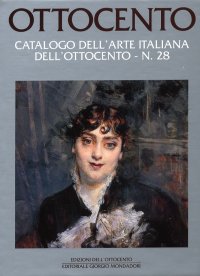Giovanni Boldini. Il Piacere
Rovereto, Mart, November 14, 2020 - February 28, 2021.
Edited by Beatrice Avanzi and Tiziano Panconi.
Genova, 2020; paperback, pp. 368, col. ill., col. plates, cm 24x28.
cover price: € 54.00
|
Books included in the offer:
Giovanni Boldini. Il Piacere
Rovereto, Mart, November 14, 2020 - February 28, 2021.
Edited by Beatrice Avanzi and Tiziano Panconi.
Genova, 2020; paperback, pp. 368, col. ill., col. plates, cm 24x28.
FREE (cover price: € 54.00)
Ottocento. Catalogo dell'Arte Italiana dell'Ottocento. Vol. 30
Milano, 2001; paperback, pp. 495, b/w ill., col. plates, cm 22x30,5.
FREE (cover price: € 40.00)
Ottocento. Catalogo dell'arte italiana dell'Ottocento. VOL. 28
Milano, 1999; bound, pp. 800, col. plates, cm 22x30.
FREE (cover price: € 77.47)
Renaissance in black and white. The art of printmaking in Venice (1494-1615)
Scripta - Comunicazione Editoria
Edited by Fara G. M. and Landau D.
English Text.
Trento, 2024; hardback, pp. 352, ill., cm 24x28.
(Studi e Ricerche).
series: Studi e Ricerche
EAN13: 9791280581877
Subject: Essays (Art or Architecture),Graphic Arts (Prints, Drawings, Engravings, Miniatures)
Period: 1400-1800 (XV-XVIII) Renaissance
Places: Venetian,Venice
Languages: 
Weight: 0 kg
This exhibition and catalogue seek to capture the essence of Veneto and Venetian Renaissance printmaking. They showcase its remarkable and groundbreaking achievements, drawing parallels with the developments in painting, as if they were mirroring each other. A visually compelling journey in which the prints' 'extremely successful black lines', as vividly described by Erasmus of Rotterdam, intricately interact with the foundational and universally recognized themes of Venetian art.
These encompass tonal chiaroscuro, expansive landscapes, vast canvases, narrative painting, the female nude, a local reinterpretation of antiquity, and a steadfast defence of the city's unyielding identity.
Through prints - objects that are immediately replicable and easily transportable, transcending geographical and linguistic boundaries - Venice revealed its profound significance within the artistic tradition of Europe as a vital crossroads of experiences in a state of perpetual and dynamic evolution.











